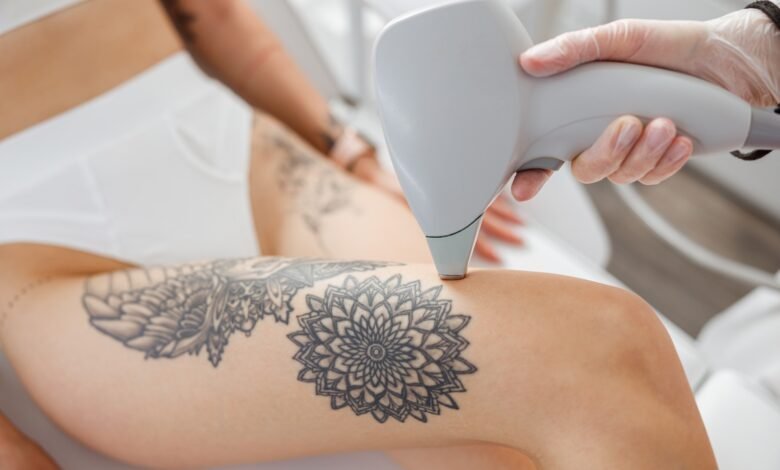
But can laser treatment completely remove a tattoo? This article explores how laser tattoo removal works, its effectiveness, and what to expect from the process.
How Does Laser Tattoo Removal Work?
Laser tattoo removal works by using high-intensity laser beams to break down the ink particles embedded in the skin. The body’s immune system then gradually removes these fragmented ink particles, causing the tattoo to fade over time.
The most effective laser technologies for tattoo removal include:
Q-Switched Lasers
These lasers deliver short bursts of energy to target tattoo ink without harming the surrounding skin. They are effective for treating black and dark-colored inks.
PicoSure and Pico Laser Technology
Pico lasers use ultra-short pulses of energy to break down ink into smaller particles, allowing for faster removal with fewer sessions. They work well on stubborn colors like green, blue, and red.
Nd:YAG Laser
This laser is particularly useful for treating tattoos on darker skin tones, as it minimizes the risk of pigmentation changes.
Can a Tattoo Be Completely Removed?
The ability to completely remove a tattoo depends on several factors, including:
1. Ink Color
Black and dark-colored inks respond best to laser treatments, as they absorb light more effectively. Lighter colors such as yellow, green, and white can be more challenging to remove.
2. Tattoo Depth and Ink Density
Tattoos with deep, dense ink take longer to remove than those with lighter shading. Professional tattoos, which use high-quality ink, generally require more sessions compared to amateur tattoos.
3. Skin Type
Individuals with lighter skin tones typically respond better to laser tattoo removal because the contrast between the ink and skin allows for more effective targeting. Darker skin tones may require a more cautious approach to prevent pigmentation changes.
4. Tattoo Age
Older tattoos tend to fade over time, making them easier to remove. In contrast, newer tattoos may require additional sessions to break down the ink effectively.
5. Number of Sessions
Complete removal of a tattoo usually requires multiple sessions, spaced several weeks apart. While some tattoos fade significantly, others may leave behind a faint shadow or mild discoloration. The number of sessions needed depends on the tattoo’s size, color, and location on the body.
What to Expect During Laser Tattoo Removal in Abu Dhabi
Consultation and Skin Assessment
A professional consultation is essential before starting laser tattoo removal. During this session, the specialist will assess the tattoo’s size, color, and depth to determine the best treatment approach.
Laser Treatment Sessions
During each session, a laser is directed at the tattooed area, breaking down the ink particles. Patients may experience mild discomfort, similar to a rubber band snapping against the skin. Cooling techniques or numbing creams may be used to enhance comfort.
Healing and Aftercare
After each session, the treated area may appear red, swollen, or scabbed. It is crucial to follow proper aftercare, such as avoiding direct sun exposure and keeping the skin moisturized, to ensure optimal healing.
Is Laser Tattoo Removal Safe?
Laser tattoo removal is considered safe when performed by trained professionals using advanced laser technology. The risk of complications is minimal, but some individuals may experience temporary redness, swelling, or slight skin discoloration.
Conclusion
Laser tattoo removal in Abu Dhabi is an effective solution for those looking to fade or completely remove unwanted tattoos. While complete removal is possible in many cases, results vary based on ink color, tattoo age, and skin type. With advanced laser technologies available, individuals can achieve significant fading or full removal with the right number of treatment sessions.



